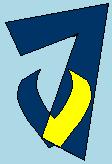
 | VENT 7 - DISTANT DOCKING STATION |
The Autonomous Underwater Cable (AUV) is an idea inspired by a chat with some MIT alums at IS Robotics as a solution to some of the difficulties of designing a cable for a Remotely Operated Vehicle (ROV). ROV's are destinguished by their cables. It is their source of power and mode of communication. Communication is integral to ROV's because without an interface to bring information about it's surroundings to it's operators to relay commands to the vehicle it ROV can do nothing (unless it's automated, but see our AUV's The Musketeers and Superman for that).
A simple cable with the manned vehicle is sufficient for the operations of our ROV tug, but power considerations for Drillete made something more complicated imperitive. The difficulty of creating a cable is summed up on the Tug page,
First, currents make it difficult to control the cable and keep it in place. It is also important that the cable not drag along the seafloor and damage the life and geology the scientists are there to study. Further, a cable that is a few miles long requires a vehicle with huge propusion capabilities because it takes so much power to drag its entire mass.Creating a self-regulating cable that could fight currents, keep away from obstacles and help propell itself out there would solve all these problems. The AUC is a normal cable enhanced with a series of intelligent automated joints. Each joint is a simple robot that recieves guidance from the ROV computer or the scientists running Drillette. After the initial guidance, the AUC nodes keeps certain coordinates, self-correcting against currents and collisions. Each node or at lease some of them would be equipted with some form of propulsion strong enough to drag out its portion of the cable, thus lightening the load on the propulsion system of Drillete herself.
Pretty neat, huh?
Last Updated 11/17/01 Heather Knight